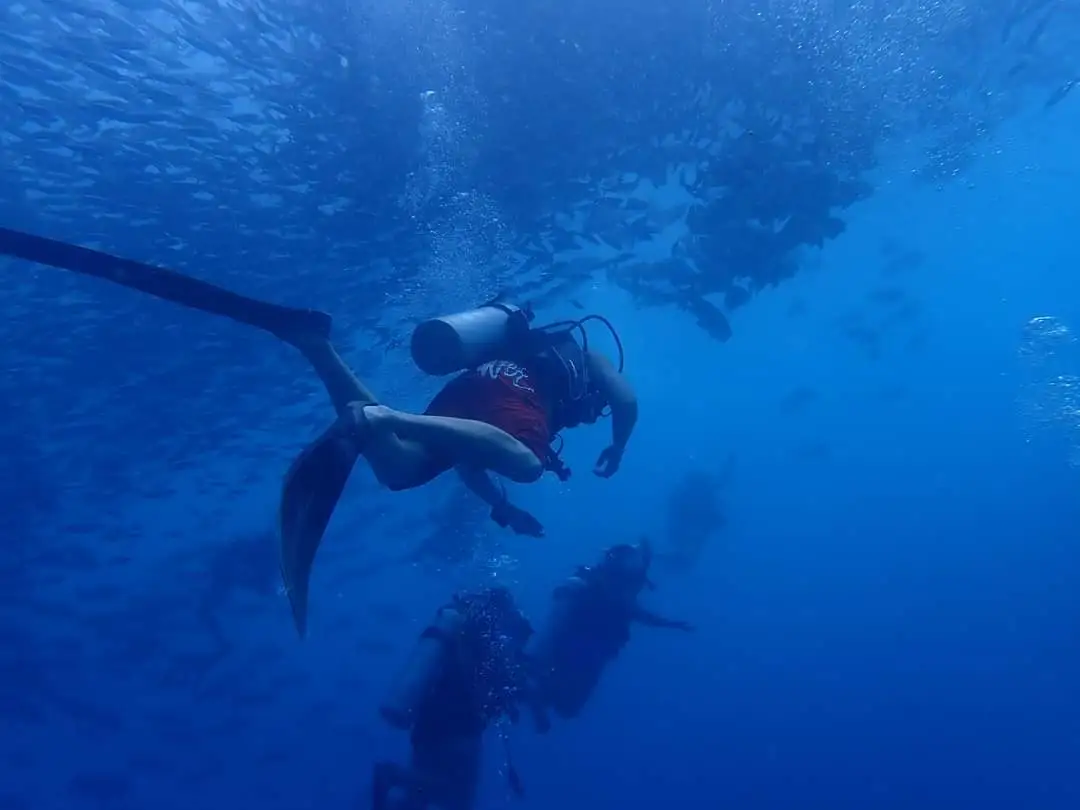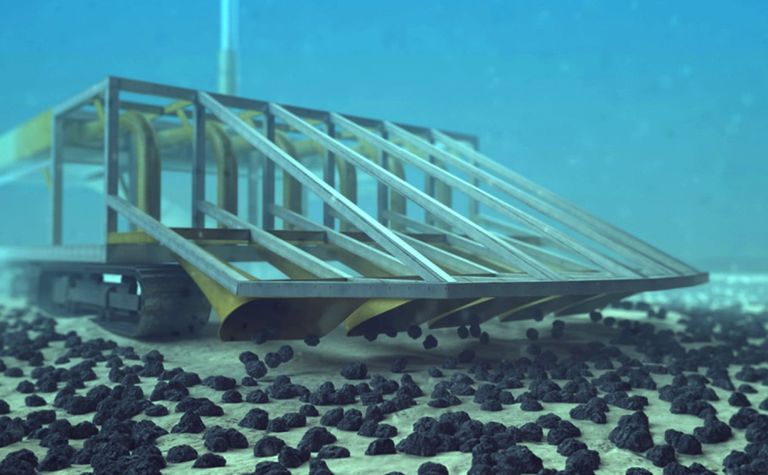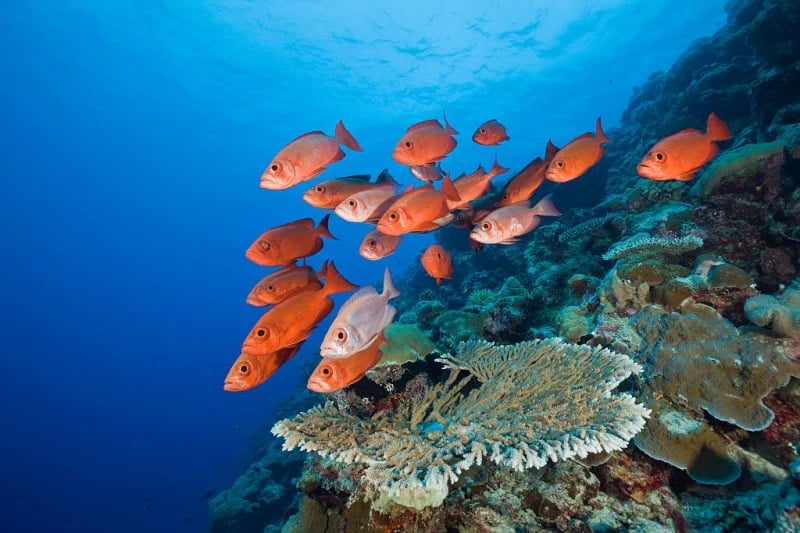The famed Palau National Marine Sanctuary is intact for now.
One of the most ambitious protection programs of any country in the world, the Palau National Marine Sanctuary, with a 475,077 sq. km. no-take zone came under pressure to re-open in July 2021, a mere year after it fully closed its doors to commercial fishing.
Palau’s ocean, referred to as one of the seven underwater wonders of the world, was legislated in 2015 as a National Marine Sanctuary, with 80% fully protected against any extractive activities and 20% open for domestic fisheries. The law allowed for a five-year phase-out period for commercial fishing operations, completely closing off commercial fishing in the No-Take Zone on 1 January 2020.
The law says Palau’s fish resources were exploited, and it was getting “relatively little revenue in proportion to the value of the asset.”
After three years of public debate, the bill became law in 2015, marking a mental shift from exploitive to generative use of resources.
“Declaring 80% of our EEZ as a no-take zone will allow the marine life in that area to rebound and spill over into the 20% domestic fishing area where our local fishermen can then harvest them. This will alleviate some of the fishing pressure on our near-shore reefs and create a healthy marine environment for our growing diving and sportfishing industry,” stated former President Tommy E. Remengesau Jr.’s signing letter in October 2015.
The law also shifted focus from fishing to tourism-based revenue, primarily the PNMS Environmental Impact Fee, dubbed Pristine Paradise Environmental Fee – PPEF. PPEF is a $100 fee charged to every international visitor coming to Palau and is a source of funds for government programs.
The COVID-19 pandemic wiped out Palau’s tourism industry, thus the PPEF, the funding mechanism not only for Palau National Marine Sanctuary but also funding for state governments, the Pension Plan, Protected Areas Network, and others.
Palau’s tourism industry, the main economic driver, represented an estimated 38% of Palau’s domestic product in 2020. In 2021, the impact resulted in over 1,000 jobs lost in the private sector, a 39% private sector loss in output, and a 21% decline in government tax revenue, https://pubs.pitiviti.org/palau-fy21-economic brief.
Opposition and controversy
The incoming government in 2021 sought to re-open the No-Take-Zone to commercial fishing to capture lost revenue. The Palau national congress introduced a proposal in July 2021 to “temporarily” open Palau’s PNMS to commercial purse seine and longline fishing to raise revenue for the government.
The proposal was highly controversial and emotionally charged. Community members and civil societies objected to the proposal, calling it short-sighted and self-serving.
Speaker Sabino Anastacio of the House of Delegates, favoring opening up the PNMS to commercial fishing, accused non-government agencies fighting the proposal of being “manipulated by external interests” and “making lots of money from the grants using the PNMS.”
In an editorial piece sent to the media, Anastacio accused,
“They run campaigns that poison our social cohesion and politics. They make big funding promises that are never fulfilled … these same actors engage with the same scorched-earth approaches—lack of rigorous science, unrealized funding promises, and campaigns to co-opt the media to serve their agenda.”
Allegations that some government officials and congress members were in the pockets of the wealthy foreign fishing companies and were proposing re-opening for personal gains were lobbed back at congress members. President Whipps called these allegations “ridiculous.”
Palau’s Traditional Council of Chiefs strongly opposed the proposal, warning against rash decisions.
“Let the PNMS continue its course uninterrupted… “We believe that no matter how dire the situation may be, it is imperative that such effort always proceeds with due regard for overriding national objectives and priorities so that to ensure that short-term solutions do not jeopardize well thought out long term policy objectives for our Republic.”
Public backlash against re-opening the No-Take-Zone successfully stopped the attempts, albeit temporarily.
Temporary relief from the growing controversy came from grant aid offered by an international group of NGOs, The Nature Conservancy, Nia Tero and Conservation International, to President Whipps’s administration. A grant of $2.6 million was given each year for three years in exchange for the existing ban remaining in place. In the three years, a mandated marine spatial planning exercise will take place to determine the “best use” of the Palau National Marine Sanctuary.
Support for the Sanctuary
But the people supporting the continued closure of the PNMS say it is not just about the money but about healthy oceans that benefit Palauan livelihoods, culture, long-term economic sustainability, and its high-value tourism brand.
“This is huge. This is monumental and cannot be compared to $1.8 million, which is pocket change for this industry. COVID-19 is temporary. It is a short-term crisis we are in but what you are changing is huge. Are you using this historic matter to address a small issue? It’s a very short-sighted leadership,” expressed Ann Kloulechad-Singeo, Executive Director of Ebiil Society, a civic organization that engages local communities in environmental restorations.
A pilot survey conducted in 2020 revealed strong public support for the Palau National Marine Sanctuary, with 58.6% of respondents favoring the PNMS and 80% closure to commercial fishing or any other extractive activities.
In 2022, people took to the streets and social media to protest against the proposal to re-open PNMS No Take Zone to commercial fishing. The protest occurred during 2022 Our Ocean Conference in April 2022 with the hashtag#savemysanctuary.
The protest drew the ire of President Whipps, who perceived the act as a counterproductive measure that shamed Palau in front of the world. The protest, he said, undermined the efforts to garner support for Palau’s fisheries.
A petition garnering over 3,000 signatures demanding to keep the current PNMS policy intact was submitted to the national congress.
Local fishermen and traditional chiefs opposed reducing the PNMS No-Take Zone to 30%. The local fishermen reported being able to catch more pelagic fish like yellowfin and big-eye tuna closer to artisanal fishing zones than before the closure.
“Bul is important, and we fishermen understand that. When it bears fruit, benefits flow to everyone,” Iechad el Teluang Simeon Eberdong, a seasoned Palauan fisherman, said of the need to maintain the existing law, “bul,” which is the traditional conservation measure implemented by chiefs to protect resources.
Paramount Chief Reklai Bao Ngirmang counseled, “Let’s not just think of today. Let’s also think about tomorrow, think of the future of our children’s children, the future of generations to come,” of the plan to reverse the PNMS policy.
“If they allow foreign commercial fishing back, we will die out. We cannot compete with the foreign commercial fishing fleet with more resources. Domestic fisheries will not grow or survive,” said the Chairman of Belau Offshore Fisheries, Inc. Ngatpang Chief Ridep Okada Techitong of Palau’s of the plans to re-open commercial fishing to the foreign fleet. “But if they open only to the local domestic fleet, then we are not opposed to it because right now, we are competing with the Japanese fishing fleet in the 20% Domestic Fishing Zone.”
The PNMS law was amended in 2019 to allow fish exports from the Domestic Fishing Zone (DFZ). It moved DFZ from the eastern side of the Palau archipelago to the northwest, closer to the high seas pocket. The change allowed the Japanese fishing fleet fishing in the domestic fishing zone to offload their catch in Japan.
Lack of science
The current government argues that the process of designating the Palau National Marine Sanctuary was not based on science but rather on feelings.
“The area designation of the 20% domestic fishing zone was based on the interest of another country, not based on a study,” said President Whipps during the April 2022 press conference. “If we are going to do something like this, let us take into consideration what is best for Palauans as well as our friends.”
“This was based on personal feelings and not science. We should make decisions based on science,” added Whipps.
Former Minister of Natural Resources, Environment and Tourism, Umiich Sengebau said, the law was changed based on the assessment from the Forum Fisheries Agency and Secretariat Pacific Community that indicated, “without the ability to export some or all of the catch from longline operations, a domestic longline fishery will almost certainly not be viable.”
The changes, he said, were in line with PNMS policy to ensure economic and social benefits to Palauans by preserving a large part of the country’s EEZ, enabling a healthy domestic fishery.
Speaker Anastacio’s opinion piece inferred that there was a “lack of science” in the development of the PNMS and said that they have sought assistance from NGOs like The Nature Conservancy to assist with the development of a better process “grounded in science, transparency, and inclusivity.” He added, “This planning process will position us to address legitimate concerns, like how to bolster our domestic fishing industry and how big a protected area we can afford. The process will result in robust marine protections that support Palau’s continued global conservation leadership with science-based, sustainable production in the areas around core no-take closures to secure sustainability in 100% of our waters.”
But others argue that the sanctuary was designed and planned based on science using studies from large marine sanctuaries like the Great Barrier Reef that showed adjoining areas to protected areas see an increase in fish spillover. And that PNMS, as a protected area, would have a spillover to the domestic and artisanal fishing zones allowing local fishermen and fishing companies to benefit.
Palau’s in-shore protected areas, such as the Ebiil Conservation area in Ngarchelong State, have demonstrated the same concept of protected areas providing spillover benefits to adjacent reefs.
Results of the Papahanaumokuakea Monument’s recent study, another large-scale marine protected area, support this premise. Spillover benefits from the world’s largest fully protected MPA (https://science.org/doi/10.1126/science.abn0098.)
Study shows fishing ban within the Monument had revived the stocks of migratory tuna that passed through its borders. Commercial fishing ceased in this Monument in 2010. The study showed yellowfin tuna caught outside the reserve increased by 54% between 2016 and 2019.
“This is supportive of using large protected areas to help restore tuna populations … and other species that we care about,” said John Lynham, a professor of Economics from the University of Hawaii and co-author of a study reported on Hawaii Civil Beat news.
Palau fishermen report catching large pelagic fishes much closer to the reef than they did before, attributing this to a lack of large foreign commercial fishing boats in Palau’s waters.
Ron Leidech, owner of Paddling Palau, a seasoned tour operator in Palau, shares that they saw more dolphins and whales closer to the main archipelago than ever before.
“Not only are we finding greater numbers of Cetaceans in the PNMS, but the very behavior of the whales and dolphins has changed. The threatening nature of foreign fishing fleets taught intelligent mammals to flee on sight. Dolphins who once fled from boats are now playfully approaching, as the trust between man and animal has been restored,” Ron Leidech of his observations of Palau’s waters without the commercial fishing boats.
Minister Steven Victor argued that the decision to carve the No-Take Zone where it is now and designate the northwest side as the domestic fishing zone was not based on science.
Fishing data collected before the PNMS closure revealed that the foreign fishing companies licensed to fish in Palau waters fished the entire area depending on the movement of the fish. For instance, Taiwanese fishing companies mostly fished in the south and east of the Babeldaob archipelago, while the Japanese fishing boats were fishing on the west and northwest of the island. They were fishing up and down the west coast depending on the fish movement.
Marine spatial planning would identify the sea mounts, for example, said Minister Victor, allowing for a more efficient and productive domestic fishery.
“There will be an opportunity for local fishing companies like BOFI, Jackson, and Rdechor, to know where to fish and to make a profit,” said Whipps of the benefits of marine spatial planning and Blue Prosperity Plan.
Economic gain and sovereign rights
Closing 80% of Palau’s EEZ does not benefit Palau, but fishing vessels waiting outside Palau’s EEZ, said Whipps.
“Studies have shown that these fish travel long distances outside of our EEZ. We see a lot of fishing vessels hanging outside of our EEZ to catch these fish. Why don’t we catch the fish to benefit our people? Our people should benefit from our resources,” said President Surangel Whipps Jr.
A study published in ICES Journal of Marine Science, 2022, showed that tagged fish range over wide geographic areas, traveling more than 1000 km before returning to the sanctuary. (Filous et al. 2022 –The movements of fish in PNMS)
Dr Alan M Friedlander, one of the study’s authors, said that protection of a large area such as the PNMS gives the highly migratory fish a respite from outside fishing pressures, allowing the species a greater chance of survival and reproduction.
“Palau National Marine Sanctuary is not that large, given these species range. Dividing the area into small pieces for different activities will not help protect the species,” said Dr. Friedlander.
The government reported that PNMS also caused a decline in fresh tuna supply to the local market. The amount of fish brought by local fishing companies falls short of Palau’s domestic consumption. With the return of tourists, that demand will increase tenfold, which domestic fishing companies cannot meet, said Minister Victor of the need to reinstate commercial fishing.
“Prior to 2020, we saw about 65 metric tons of fish landed by the fishing fleets in Palau to meet local demand, but in 2021, only 22 metric tons were landed. This shows that there is less tuna in the local market, and the price has gone up,” reported Minister Victor to the House of Delegates on March 9, 2022.
Blue Prosperity, the “new” approach
The Blue Prosperity Plan, a 100% managed marine environment, increased benefits and revenue to Palau, and more robust domestic fisheries are the catchphrases of the “new deal.”
The Blue Prosperity Plan, the government’s white paper on Palau’s fishing industry, utilizes marine spatial planning to support the expansion of Palau’s fisheries industry, domestic and foreign, restoring longline and purse seine fishing and implementing domestic pole & line/day boat fishery while keeping a minimum of 30% No-Take Zone.
The plan includes the construction of infrastructure to support the fisheries industry and the expansion of aquaculture.
The outcomes of the Blue Prosperity plan hinge on using marine spatial planning as the management tool for decision-making.
A proposal for a “100% managed” marine system named the “Blue Prosperity Plan” was legislated to provide a segue to future plans to re-open the “No-Take-Zone” to commercial fishing activities.
The Blue Prosperity Plan proposed by Whipps’ government included “an inclusive, and locally-led marine spatial planning(MSP) process to implement a science-based zoning and management plan that secures 30% of Palau’s EEZ under the no-take zone and…catalyzes a sustainable fisheries development program to establish a world-class pelagic fishery that returns more value to Palau and minimizes impacts to its resources.”
But some say that the proposal is already incorporated into the law and is unnecessary.
Palau’s marine environment is already 100% managed, said Senator Umiich Sengebau, former Minister of Natural Resources, now MAFE. He said 80% of the EEZ is a designated no-take zone. 20% is open for fisheries, and both are managed areas. Artisanal zones are reserved for nearshore fisheries, and trawling and deep-sea mining are prohibited. The development and strengthening of domestic fisheries are already mandated by law.
The only new item under the Blue Prosperity Plan is the reduction of the no-take zone down to 30% of the Exclusive Economic Zone and the re-opening of the rest of the EEZ to commercial fishing activities.
The implementation of the Blue Prosperity Plan was incorporated into law as part of a grant condition provided by a group of international conservation NGOs. The grant provides $2.6 million each year to the Palau government for three years, keeping commercial fishing out of the 80% No Take Zone of the PNMS while marine spatial planning takes place.
The marine spatial planning exercise is expected to be completed within three years; after that, it will provide recommendations to lawmakers on the “best use” of Palau’s EEZ.
This story was supported by Internews’ Earth Journalism Network.




